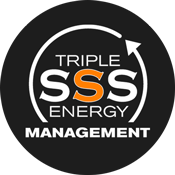Renewable energy is energy that is replenished and does not deplete. One type of renewable energy is solar. Solar energy is when electricity is made from the sun’s energy. The sun releases photons which are particles representing a quantum of light. Photons travel 93 million miles from the sun to the earth in about 8.5 minutes. The photons then hit a solar cell and electrons are knocked loose from their atoms. Conductors are attached to the positive and negative side of a solar cell and it forms an electrical circuit. Electrons then flow through the circuit and generates electricity. The more solar panels used, the more energy you will generate.
To know how many solar panels you will need, you will need to know your energy consumption. You will need to know your kilowatt hours (kWh) used per month. This number is on your utility bill as “kWh used”. To get your monthly average you’ll need to look at bills for the past year, add up the stated kWh’s used and divide by 12. This gives you your monthly average. Next, divide your monthly kWh average by 30 to calculate your daily average. For instance, if your average monthly kWh is 1200, then your average daily kWh is 40. A solar panel produces about 1 kWh per day. If your daily usage is 40 kWh, you would need 40 solar panels to generate 100 percent of your energy needs. One solar panel s 5 ½ feet tall by 3 feet wide, so the size of your roof is also a factor to consider.


